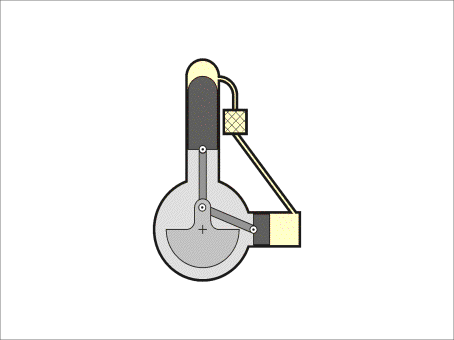The Stirling cycle
More commonly known as a power producing heat engine, the Stirling cycle can also be operated in its reverse mode in the form of a heat pump. While in the direct mode the heat from a high temperature source is partly turned into usable work and partly into waste heat rejected at a lower temperature, a heat pump requires the input of work to create a hot and a cold temperature. If the main objective is the utilisation of the cold end (typically below ambient temperature) this device is referred to as a refrigerator. If, however, the hot end is of interest, for example for heating purposes, one talks about a heat pump. It has generally been acknowledged that only power producing heat engines are referred to as 'Stirling engines', whereas the whole family - those operating in direct and reverse mode - are termed 'Stirling machines'.
Design challenges
Despite their appealing advantages and apparent simplicity, there is a lot more to the design of Stirling machines than meets the eye. The thermodynamic and fluid-dynamic processes taking place in the practical Stirling cycle are highly complex and interdependent. Real Stirling machines have hardly anything in common with what can be found in textbooks. A designer who attempts to optimise a Stirling machine will be in a constant battle of trade-offs. For example, the fact that the use of lubricants should be avoided at all costs to prevent small flow passages such as heat exchanger tubes from blocking doesn't make this task any easier. Taking other aspects such as low-maintenance requirements, cost of manufacture or efficiency into consideration, the task mounts up to become a real challenge.

While all this sounds very sobering and discouraging, one should not forget that these are not insurmountable problems, but technical challenges for which solutions can be found. The Stirling cycle may not always be the answer, but its versatility and advantageous characteristics may lend itself to more potential applications than people might imagine. When developing a Stirling machine it is therefore essential not to lose sight of the context and not to be lured into a cascade of complicated would-be engineering solutions. While simple solutions may not always be the best, this is certainly true for the design of Stirling machines.
